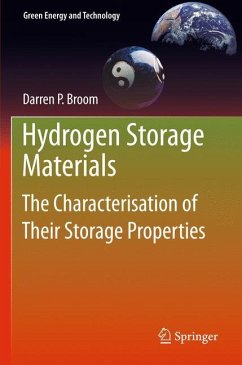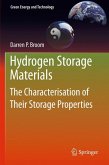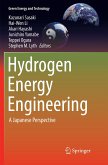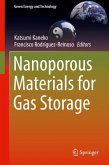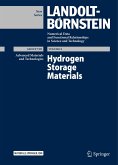The problem of storing hydrogen safely and effectively is one of the major technological barriers currently preventing the widespread adoption of hydrogen as an energy carrier and the subsequent transition to a so-called hydrogen economy. Practical issues with the storage of hydrogen in both gas and liquid form appear to make reversible solid state hydrogen storage the most promising potential solution. Hydrogen Storage Materials addresses the characterisation of the hydrogen storage properties of the materials that are currently being considered for this purpose.
The background to the topic is introduced, along with the various types of materials that are currently under investigation, including nanostructured interstitial and complex hydrides, and porous materials, such as metal-organic frameworks and microporous organic polymers. The main features of Hydrogen Storage Materials include:
an overview of the different types of hydrogen storage materials and the properties that are of interest for their practical use;descriptions of the gas sorption measurement methods used to determine these properties, and the complementary techniques that can be used to help corroborate hydrogen uptake data; andextensive coverage of the practical considerations for accurate hydrogen sorption measurement that drive both instrument design and the development of experimental methodology.
Hydrogen Storage Materials provides an up-to-date overview of the topic for experienced researchers, while including enough introductory material to serve as a useful, practical introduction for newcomers to the field.
The background to the topic is introduced, along with the various types of materials that are currently under investigation, including nanostructured interstitial and complex hydrides, and porous materials, such as metal-organic frameworks and microporous organic polymers. The main features of Hydrogen Storage Materials include:
an overview of the different types of hydrogen storage materials and the properties that are of interest for their practical use;descriptions of the gas sorption measurement methods used to determine these properties, and the complementary techniques that can be used to help corroborate hydrogen uptake data; andextensive coverage of the practical considerations for accurate hydrogen sorption measurement that drive both instrument design and the development of experimental methodology.
Hydrogen Storage Materials provides an up-to-date overview of the topic for experienced researchers, while including enough introductory material to serve as a useful, practical introduction for newcomers to the field.
"When compared with fossil fuels, hydrogen comes out on top in every comparison, except one. Hydrogen is the lightest fuel, the most efficient fuel and the cleanest fuel. However, for a given amount of energy, its storage is heavier and takes more volume, as compared with fluid fossil fuels, i.e., petroleum and natural gas. Hence, extensive R&D activities around the world are taking place in order to improve the gravimetric and volumetric storage properties of hydrogen. In this respect, Hydrogen Storage Materials offer the best promise. The book "Hydrogen Storage Materials: The Characterisation of Their Storage Properties" by Darren P. Broom admirably presents the latest knowledge and research results on this important topic. Consequently, I strongly recommend this book to hydrogen energy scientists and engineers in general, and to those involved in the storage of hydrogen in particular." T. Nejat Veziroglu, President of International Association for Hydrogen Energy "The book contains an impressive number of useful and topical references, and a descriptive introductory chapter outlining the search for a viable solid state store...[It] provides a good overview of these developments which sets the scene for the subsequent chapters which concentrate in commendable detail on the measurement techniques... In summary therefore, the search for a viable, lightweight solid state hydrogen storage material continues and to aid this task, this book provides a very valuable addition to a researcher's shelf." Rex Harris, International Journal of Hydrogen Energy, vol. 37, issue 9, 2012, p.7950-7951

